THE SPECATATOR OF SPACE !
THE SPECTATOR
SERIES NAME: - "LEVEL UP" BY = CHITEKI KUN!-(N.S.R)
Now we gonna talk about the big boss of space telescopes the JWST .Yup! you guys heard it right James Webb sapce telescope .FYI the names James Edwin Webb is one of the finest scientist so they named this telescope with his name as we go on more details . (October 7, 1906 – March 27, 1992) was an American government official who served as Undersecretary of State from 1949 to 1952. He was also the second appointed administrator of NASA from February 14, 1961, to October 7, 1968..Inventors of JWST are ng & ball aerospace & technologies corps...
spectacle of the past to see what happened photos from the past from 1million miles away ..................!
what is space telescope by the way ?
FYI . A space telescope is like a telescope or space observatory in outer space used to observe astronomical objects. Space telescopes avoid the filtering and distortion (scintillation) of electromagnetic radiation [e.m.r] which they observe, and avoid light pollution which ground-based observatories encounter.
They are divided into two types:-
Space telescopes are distinct from Earth mainly imaging satellites, which point towards the Earth for satellite imaging, applied for weather analysis, espionage, and other types of information gathering etc.....
this is the classification and legit defenition of the space telescope
As we go on we talk about the JWST but for a while we do'nt we discuss about [hst]
Hubble Space Telescope (HST)
The Hubble Space Telescope (HST) is a 2.5m diameter telescope operating at U.V, Optical, and Near-infrared wavelengths. It is a cooperative program of the (ESA) and the and (NASA) for the benefit of the international Astronomical community.
HST provides high-resolution data [h.r.d] that is used to understand the structure within galaxies and differentiate the lightwhich is originating from the stars from that originating from the great void = black holes.
It also has the sensitivity to see the faintest and most distant galaxies.
The James Webb Space Telescope (JWST) .is a space telescope designed primarily to conduct infrared astronomy. As the largest optical telescope in space, its greatly improved infrared resolution and sensitivity allows it to view objects too old, distant, or faint for the Hubble Space Telescope. This is expected to enable a broad range of investigations across the fields of astronomy and cosmology, such as observation of the first stars and the formation of the first galaxies, and detailed atmospheric characterization of potentially habitable exoplanets.
COSTED AROUND $1000crs usd
LET'S DEEP DIVE INTO TOPIC!
LAUNCHING AND SOME MORE THINGS
JWST was launched on 25th December 2021 on an Ariane 5 rocket from Kourou, French Guiana, and arrived at the Sun–Earth L2 Lagrange point in January 2022. As of July 2022, JWST is intended to succeed the Hubble as NASA's flagship mission in astrophysics. The first image from JWST was released to the public via a press conference on 11 July 2022.
BRAINSTORMING SPECIFICATIONS OF J.W.S.T
FAQ'S
1.Now I think you guys got a question that why is beryllium used in mirrors?
Because beryllium is a light metal (atomic symbol: Be) that has many features that make it desirable for Webb's primary mirror. In particular, beryllium is very strong for its weight and is good at holding its shape across a range of temperatures. Beryllium is a good conductor of electricity and heat, and is not magnetic.
2.And here again why GOLD ?
Because the goldis very light but extremely strong. It is for thermal control and protects the delicate on-board instruments from the extreme temperatures of space.. It is called multi-layer insulation (MLI)
And back to topic JWST
And it is dream project for them 25yrs DELAYED
At initial designs for the telescope, then named the Next Generation Space Telescope, began in 1996.
Two concept studies were commissioned in 1999, for a potential launch in 2007 and a US$1 billion budget. Yup! you heard it right The program was plagued with enormous cost overruns and delays.
A major redesign in 2005 led to the current approach, with construction completed in 2016 at a total cost of US$10 billion. The high-stakes nature of the launch and the telescope's complexity were remarked upon by the media, scientists and engineers. hahaha great things takes time people but it took some more because we used to see the YESTERDAY
And the main features are:-
Indepth info about the . James Webb Space Telescope has a mass that is about half of Hubble Space Telescope's mass. Yup! half of [HST]. And the JWST has a 6.5-meter (21 ft)-diameter gold-coated beryllium primary mirror made up of 18 separate hexagonal mirrors. The mirror has a polished area of 26.3 m2 (283 sq ft), of which 0.9 m2 (9.7 sq ft) is obscured by the secondary support struts, giving a total collecting area of 25.4 m2 (273 sq ft). This is over *6 times larger than the collecting area of Hubble's 2.4-meter (7.9 ft) diameter mirror, which has a collecting area of 4.0 m2 (43 sq ft). The mirror has a gold coating to provide infrared reflectivity and this is covered by a thin layer of glass for durability.................
JWST is designed primarily for near-infrared astronomy, but can also see orange and red visible light, as well as the mid-infrared region, depending on the instrument. It can detect objects up to 100 times fainter than Hubble can, and objects much earlier in the history of the universe, back to redshift z~20 (about 180 million years cosmic time after the Big Bang.
For comparison, the earliest stars are thought to have formed between z~30 and z~20 (100–180 million years cosmic time).And the first galaxies may have formed around redshift z~15 (about 270 million years cosmic time). Hubble is unable to see further back than very early reionization at about z~11.1 (galaxy GN-z11, 400 million years cosmic time).
The design emphasizes the near to mid-infrared for several reasons:-
High-redshift (very early and distant) objects have their visible emissions shifted into the infrared, and therefore their light can be observed today only via infrared astronomy.Infrared light passes more easily through dust clouds than visible light.
Colder objects such as debris disks and planets emit most strongly in the infrared[ir]
These infrared bands are difficult to study from the ground or by existing space telescopes such as Hubble.
Ground-based telescopes must look through Earth's atmosphere, which is opaque in many infrared bands (see figure of atmospheric absorption). Even where the atmosphere is transparent, many of the target chemical compounds, such as water, carbon dioxide and methane, also exist in the Earth's atmosphere, vastly complicating analysis. Existing space telescopes such as Hubble cannot study these bands since their mirrors are insufficiently cool (the Hubble mirror is maintained at about 15 °C [288 K; 59 °F]) which means that the telescope itself radiates strongly in the infrared bands.
JWST can also observe nearby objects, including objects in the Solar System, having an apparent angular rate of motion of 0.030 arc seconds per second or less. This includes all planets and satellites, comets, and asteroids beyond Earth's orbit, and "virtually all" known Kuiper Belt Objects.[12] In addition, it can observe opportunistic and unplanned targets within 48 hours of a decision to do so, such as supernovae and gamma ray bursts.
JWST operates in a halo orbit, circling around a point in space known as the Sun–Earth L2 Lagrange point, approximately 1,500,000 km (930,000 mi) beyond Earth's orbit around the Sun. Its actual position varies between about 250,000 and 832,000 km (155,000–517,000 mi) from L2 as it orbits, keeping it out of both Earth and Moon's shadow. By way of comparison, Hubble orbits 550 km (340 mi) above Earth's surface, and the Moon is roughly 400,000 km (250,000 mi) from Earth. Objects near this Sun–Earth L2 point can orbit the Sun in synchrony with the Earth, allowing the telescope to remain at a roughly constant distance with continuous orientation of its unique sunshield and equipment bus toward the Sun, Earth and Moon. Combined with its wide shadow-avoiding orbit, the telescope can simultaneously block incoming heat and light from all three of these bodies and avoid even the smallest changes of temperature from Earth and Moon shadows that would affect the structure, yet still maintain uninterrupted solar power and Earth communications on its sun-facing side. This arrangement keeps the temperature of the spacecraft constant and below the 50 K (−223 °C; −370 °F) necessary for faint infrared observations.
To make observations in the infrared spectrum,
JWST must be kept under 50 K (−223.2 °C; −369.7 °F); otherwise, infrared radiation from the telescope itself would overwhelm its instruments. So here thwy use a material called KAPTON E .It therefore uses a large sunshield to block light and heat from the Sun, Earth, and Moon, and its position near the Sun–Earth L2 keeps all three bodies on the same side of the spacecraft at all times. Its halo orbit around the L2 point avoids the shadow of the Earth and Moon, maintaining a constant environment for the sunshield and solar arrays.The shielding maintains a stable temperature for the structures on the dark side, which is critical to maintaining precise alignment of the primary mirror segments in space.
The five-layer sunshield, each layer as thin as a human hair is constructed from Kapton E, a commercially available polyimide film from DuPont, with membranes specially coated with aluminum on both sides and a layer of doped silicon on the Sun-facing side of the two hottest layers to reflect the Sun's heat back into space.Accidental tears of the delicate film structure during deployment testing in 2018 led to further delays to the telescope.
test until it twerks i think this is their motto it seems [surreal comedy]............\
The sunshield was designed to be folded twelve times so that it fit within the Ariane 5 rocket's payload fairing,ORIGAMI METHOD.And which is 4.57 m (15.0 ft) in diameter, and (53.1 ft) long. The shield's fully deployed dimensions were planned as 14.162 m × 21.197 m (46.46 ft × 69.54 ft). The sunshield was hand-assembled at ManTech (NeXolve) in Huntsville, Alabama, before it was delivered to Northrop Grumman in Redondo Beach, California, for testing.
Because of the sunshield, JWST does not have an unlimited field of regard at any given time. The telescope can see 40 percent of the sky from one position and can see all of the sky over a period of six months.
Scientific instruments
1.The Integrated Science Instrument Module (ISIM) is a framework that provides electrical power, computing resources, cooling capability as well as structural stability to the Webb telescope. It is made with bonded graphite-epoxy composite attached to the underside of Webb's telescope structure. The ISIM holds the four science instruments and a guide camera.
2.NIRCam (Near InfraRed Camera) is an infrared imager which will have a spectral coverage ranging from the edge of the visible (0.6 μm) through to the near infrared (5 μm).There are 10 sensors each of 4 megapixels. NIRCam will also serve as the observatory's wavefront sensor, which is required for wavefront sensing and control activities, used to align and focus the main mirror segments. NIRCam was built by a team led by the University of Arizona, with principal investigator Marcia J. Rieke. The industrial partner is Lockheed-Martin's Advanced Technology Center in Palo Alto, California.
3.MIRI (Mid-InfraRed Instrument) will measure the mid-to-long-infrared wavelength range from 5 to 27 μm.It contains both a mid-infrared camera and an imaging spectrometer.MIRI was developed as a collaboration between NASA and a consortium of European countries, and is led by George Rieke (University of Arizona) and Gillian Wright (UK Astronomy Technology Centre, Edinburgh, Scotland, part of the Science and Technology Facilities Council).MIRI features similar wheel mechanisms to NIRSpec which are also developed and built by Carl Zeiss Optronics GmbH (today Hensoldt) under contract from the Max Planck Institute for Astronomy, Heidelberg, Germany. The completed Optical Bench Assembly of MIRI was delivered to Goddard Space Flight Center in mid-2012 for eventual integration into the ISIM. The temperature of the MIRI must not exceed 6 K (−267 °C; −449 °F): a helium gas mechanical cooler sited on the warm side of the environmental shield provides this cooling.
NIRCam and MIRI feature starlight-blocking coronagraphs for observation of faint targets such as extrasolar planets and circumstellar disks very close to bright stars.The infrared detectors for the NIRCam, NIRSpec, FGS, and NIRISS modules are being provided by Teledyne Imaging Sensors (formerly Rockwell Scientific Company). The James Webb Space Telescope (JWST) Integrated Science Instrument Module (ISIM) and Command and Data Handling (ICDH) engineering team uses SpaceWire to send data between the science instruments and the data-handling equipment.
Comparison with other telescopes comparison with Hubble primary mirror
Primary mirror size comparison between JWST and Hubble
The desire for a large infrared space telescope traces back decades. In the United States, the Space Infrared Telescope Facility (SIRTF, later called the Spitzer Space Telescope) was planned while the Space Shuttle was in development, and the potential for infrared astronomy was acknowledged at that time. Unlike ground telescopes, space observatories were free from atmospheric absorption of infrared light. Space observatories opened up a whole "new sky" for astronomers.The tenuous atmosphere above the 400 km nominal flight altitude has no measurable absorption so that detectors operating at all wavelengths from 5 μm to 1000 μm can achieve high radiometric sensitivity.
However, infrared telescopes have a disadvantage: they need to stay extremely COLD, and the longer the wavelength of infrared, the colder they need to be.If not, the background heat of the device itself overwhelms the detectors, making it effectively blind.This can be overcome by careful spacecraft design, in particular by placing the telescope in a dewar with an extremely cold substance, such as liquid helium. The coolant will slowly vaporize, limiting the lifetime of the instrument from as short as a few months to a few years at most.In some cases, it is possible to maintain a temperature low enough through the design of the spacecraft to enable near-infrared observations without a supply of coolant, such as the extended missions of Spitzer Space Telescope and Wide-field Infrared Survey Explorer, which operated at reduced capacity after coolant depletion. Another example is Hubble's Near Infrared Camera and Multi-Object Spectrometer (NICMOS) instrument, which started out using a block of nitrogen ice that depleted after a couple of years, but was then replaced during the STS-109 servicing mission with a cryocooler that worked continuously. The James Webb Space Telescope is designed to cool itself without a Dewar, using a combination of sunshades and radiators, with the mid-infrared instrument using an additional cryocooler........... with a mass of helium...
RECENT PICS BY J.W.S.T
Participating countries:-
Austria,Belgium,Canada,CzechRepublic,Denmar,Finland,France,Germany,Greece, Ireland,Italy,Luxembourg, Netherlands ,Norway,Portugal ,Spain ,Sweden , Switzerland ,United Kingdom ,United States
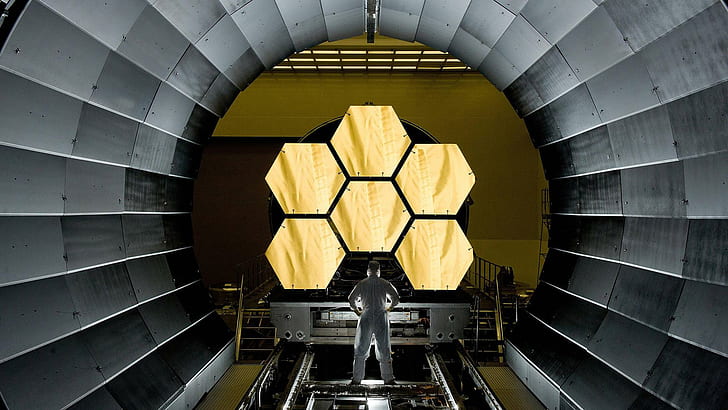

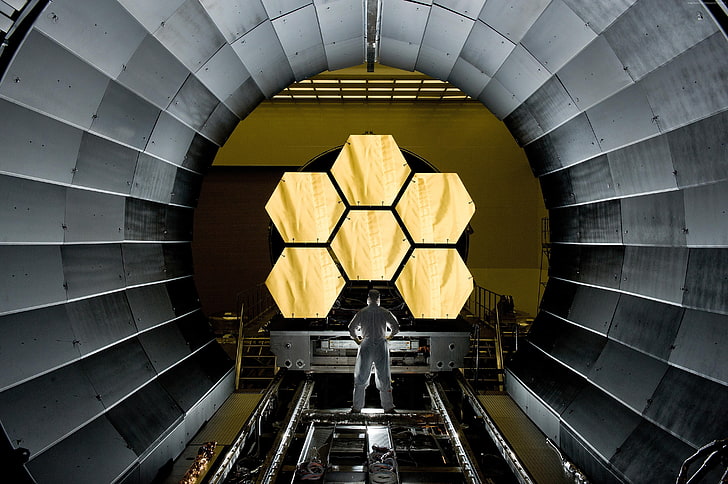
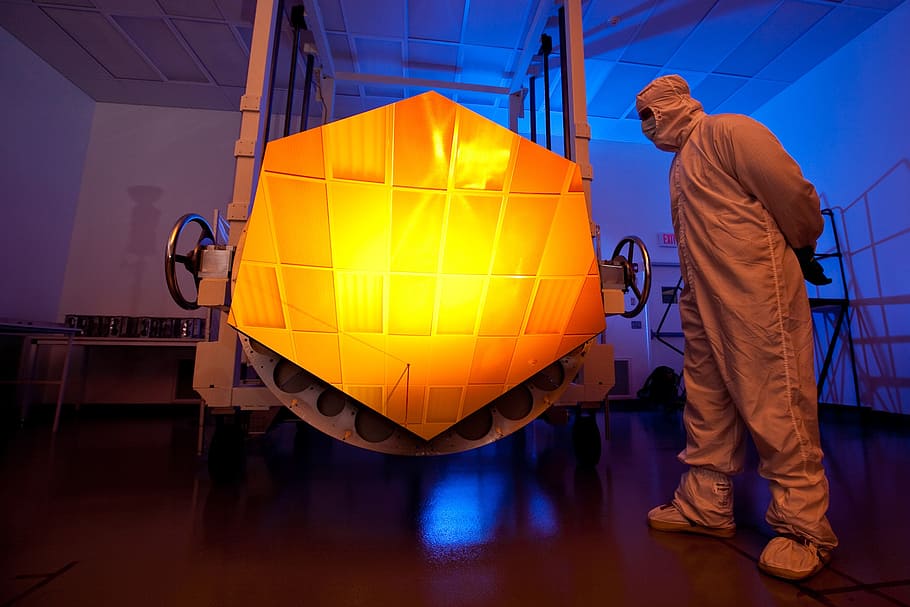
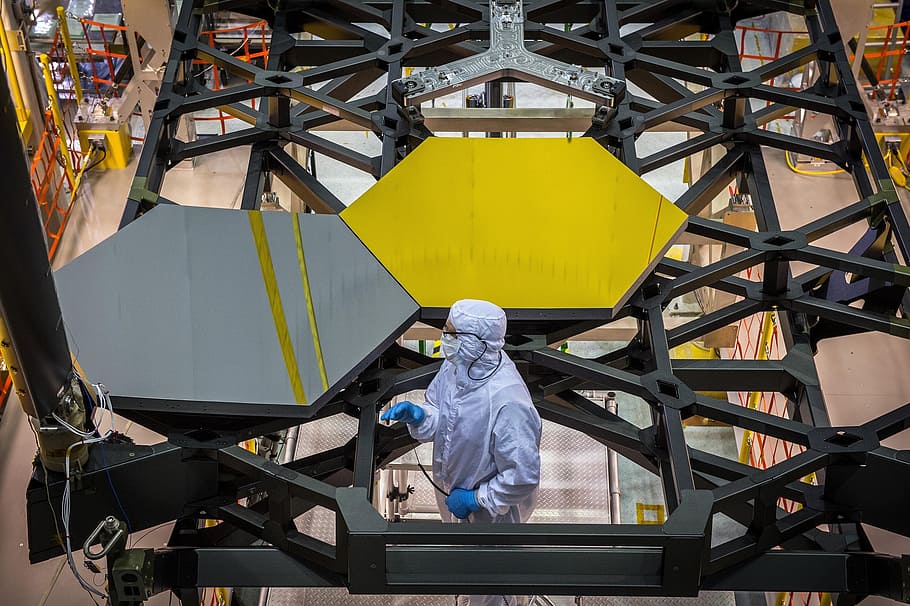



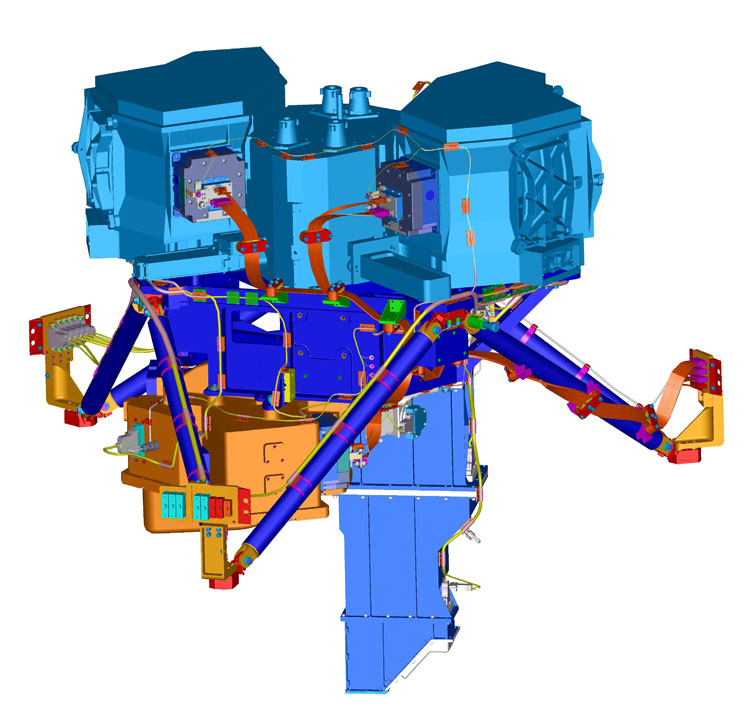

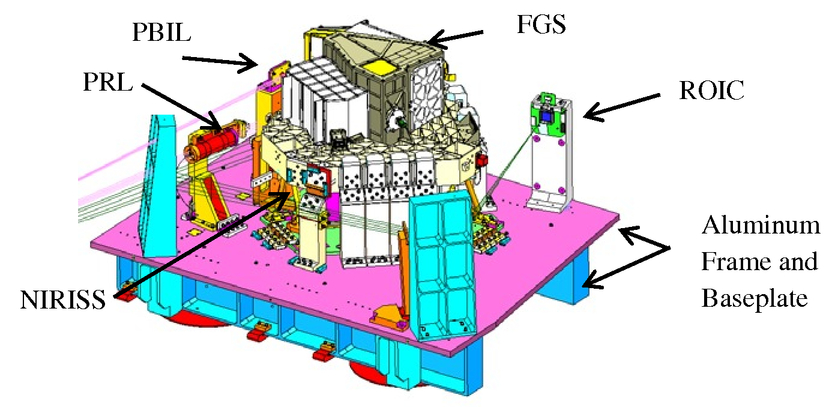





Comments
Post a Comment